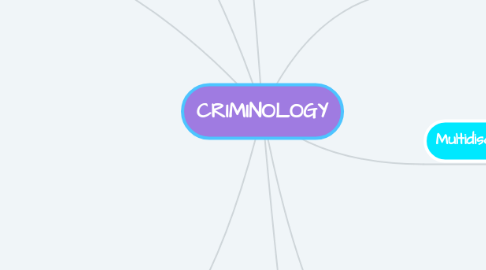
1. Beccaria
1.1. propose a
1.1.1. Proper proportion
1.1.1.1. between
1.1.1.1.1. Crimen
1.1.1.1.2. Punishment
2. Same sentence have different effects of different people
3. CLASSICISM
3.1. Crime
3.1.1. is an
3.1.1.1. action freely chosen
3.2. Law & order debate
3.2.1. two views
3.2.1.1. Hobbes
3.2.1.1.1. Pessimistic
3.2.1.2. Rousseau
3.2.1.2.1. Liberal softer
3.3. Locke
3.3.1. is the
3.3.1.1. Law
3.3.1.1.1. that gave men
3.4. Bentham
3.4.1. believed that the
3.4.1.1. pain of punishment
3.4.1.1.1. should exceed the
4. POSITIVISM
4.1. Biological
4.1.1. Sheldon
4.1.1.1. body types of young men
4.1.1.1.1. Endomorphs
4.1.1.1.2. Mesomorphs
4.1.1.1.3. Ectomorphs
4.1.2. extra male chromosome
4.1.2.1. may lead to an
4.1.2.1.1. aggresive male criminal person
4.1.3. Eye colouring
4.1.4. eight points of difference between
4.1.4.1. "Normal" people
4.1.4.2. Convicted offenders
4.1.5. IQ
4.1.6. Biochemical factors
4.1.6.1. sexual hormones
4.1.6.2. adrenaline
4.1.6.3. blood sugar
4.1.6.4. cholesterol
4.2. Psychological
4.2.1. Behaviour
4.2.1.1. is a
4.2.1.1.1. Function of
4.2.2. Eysenk
4.2.2.1. 3 dimensions of personality
4.2.2.1.1. (E) Introversion-extroversion
4.2.2.1.2. (N) Neuroticism
4.2.2.1.3. (P) Psychotism
4.2.3. Freud
4.2.3.1. super ego and ego
4.2.3.1.1. mental illness
4.2.3.1.2. weak conscience
4.3. Sociological
4.3.1. Durkheim
4.3.1.1. considered that
4.3.2. Felson
4.3.2.1. a burglary requires
4.3.2.1.1. an absence of suitable guardians
4.3.2.1.2. a likely offender
4.3.2.1.3. a suitable target
4.3.3. Crime
4.3.3.1. Brantinghams
4.3.3.1.1. knowledge of areas
4.3.3.2. Rex & Moore
4.3.3.2.1. difficulties by groups there
4.3.4. Wilson & Kelling
4.3.4.1. produced their
4.3.4.1.1. Broken windows hypothesis
5. What it is?
5.1. The scientific study of crime
5.2. Thinking about science as meaning a method of investigation
6. Multidisciplinarity
6.1. Psychologist
6.2. Psychiatrist
6.3. Statisticians
6.4. Economist
6.5. Nutrionist
6.6. Architects
7. CONTROL THEORIES
7.1. based on the idea that
7.1.1. people would commit crimes
7.1.1.1. if left to their
7.1.1.1.1. own devices
7.2. Hobbes
7.2.1. believed that
7.2.2. It is fear that makes people obey laws
7.3. Toby
7.3.1. introduced the
7.3.1.1. Stake in conformity
7.3.1.1.1. young people had
7.4. Nye
7.4.1. family as source of control
7.5. Theory of Reckless
7.5.1. describes forces
7.5.1.1. that push people into crime
7.5.1.2. those that restrain them
7.6. Hirschi
7.6.1. social groups
7.6.1.1. strong bonds
7.6.1.1.1. control
7.6.1.2. weakened or broken bonds
7.6.1.2.1. crime
7.7. Gottfredson & Hirschi
7.7.1. theory of crime
7.7.1.1. lack of self control
7.7.1.2. opportunities
